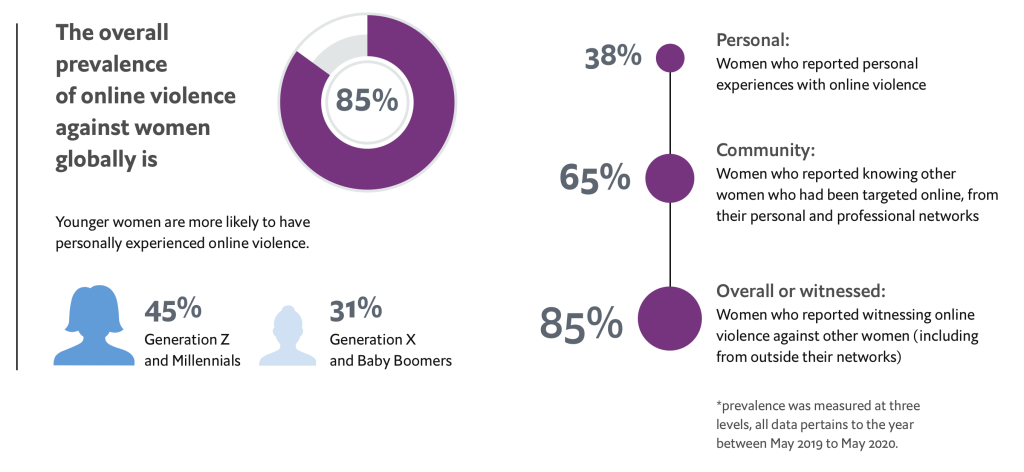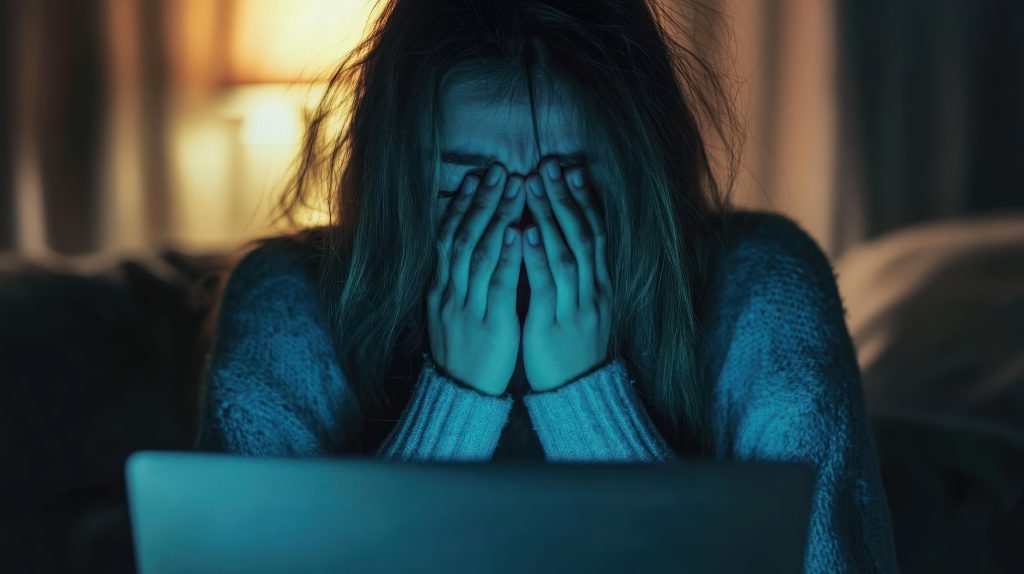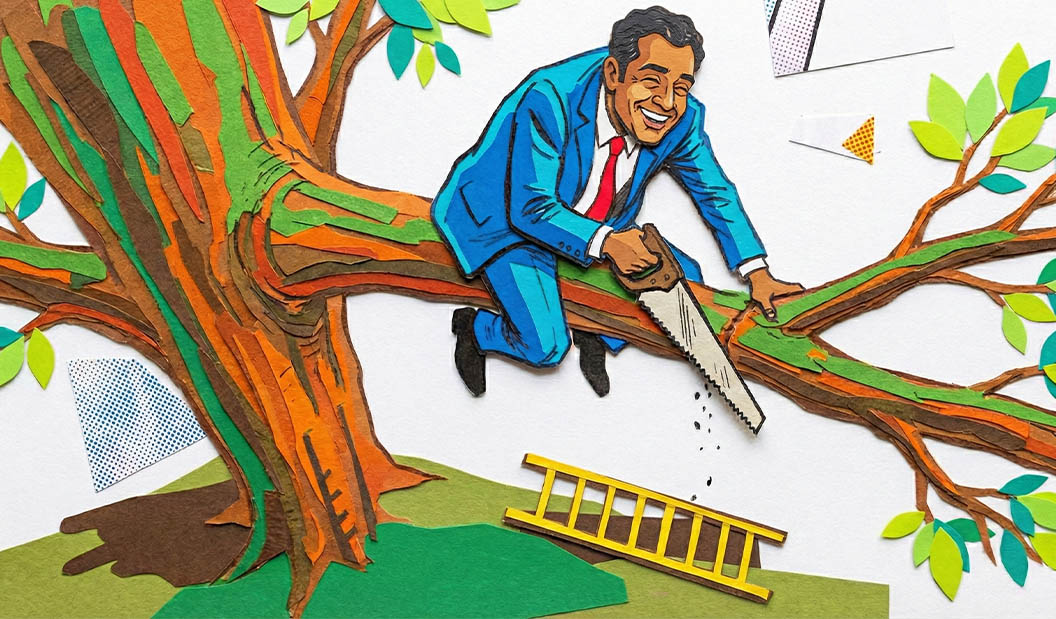Last week brought to light the Telegram nude content case in the Maldives serving as a glaring example of violence against women and girls in digital contexts, shedding light on the systemic gender-based violence occurring within online spaces. The operation of 43 channels, as revealed by the Maldives Police Service (MPS), shows the horrifying scale of digital exploitation. The suspects posted 241,651 photos and 86,618 videos, many of which were non-consensual and involved children. The fact that 34,680 people subscribed to these channels by paying a fee reflects how ICT-facilitated violence can be monetized, further incentivising such crimes.

In this case, three suspects created and managed multiple Telegram channels, where they posted explicit photos and videos of Maldivian women and children. These digital crimes resulted in the violation of personal privacy and the perpetuation of gender-based violence, while also facilitating financial exploitation.
In this case study, I explore the issues with definition and terminology, the gravity of the issue, impact of digital violence, the drivers of this violation, responsibilities of the government and need for international cooperation highlighted by this case. I also put forth policy recommendations that we need to adopt urgently to address the emerging and yet persisting issue.
The Grave Continuum of GBV from offline to online
People are increasingly living their lives online. COVID 19 pushed all of us into the virtual world for survival- to work, to study, to earn, to stay connected, to stay safe and alive. With this push, we were forced to carry our problems- especially the existing structural barriers affecting the already vulnerable to the virtual world too.
The recent arrests connected to the Telegram nude content case in the Maldives reveal the grave nature of online violence against women and children. This case highlights a deeply troubling trend—violence that begins in the digital world but causes real harm in the real world- amplifying the psychological, social, and economic impacts on victims.
The nature of the case underscores the expanding and devastating impact of online violence, which has increasingly taken the form of sexual exploitation, harassment, and financial extortion. It is a direct violation of privacy, personal autonomy, and human dignity- not only does it violate individual rights but exacerbates gender-based violence by targeting women and children, exploiting their vulnerability, and profiting from their suffering.

The anonymity of online platforms, combined with the widespread reach and ease of content dissemination, creates a fertile environment for this type of exploitation. Victims are subjected to shame, fear, and long-lasting trauma. In cases like these, the threat is not just the immediate violation but the enduring harm caused by the perpetuation of images and the difficulty in removing such content from the digital world.
Effects of online Technology-Facilitated Gender-Based Violence
Violence against women in digital contexts, can have devastating impacts on victims’ mental and emotional well-being. Survivors of online violence often experience post-traumatic stress disorder (PTSD), depression, anxiety, and in extreme cases, self-harm or suicide. The cumulative effects of both online and offline violence amplify the harm, leaving long-lasting scars on women and girls, especially when the abuse is persistent[1]
Research highlights that online violence can be just as damaging as offline violence. For instance, a study from Latin America conducted by the Follow-up Mechanism to the Belém do Pará Convention and UN-Women showed that young women who experience digital violence often suffer from emotional stress, feelings of physical insecurity, and lower self-esteem, affecting their daily lives and school performance[2].
Furthermore, online abuse silences women’s voices in public spheres, reinforcing the “chilling effect,” where women and girls are discouraged from participating in public life due to fear of further harassment. This effect is particularly profound in professional spaces like politics and journalism, where marginalized women, in particular, are dissuaded from entering these fields. The intergenerational impact of digital violence further deepens the digital gender divide, as young women fear facing the same abuse experienced by their predecessors.
This violence extends beyond personal and public life into educational settings and workplaces, with studies showing that 51% of women experiencing online abuse report serious impacts on their professional lives[3].
The Maldives Telegram case underscores the global need for stronger legal frameworks, international cooperation, and public awareness to address both the immediate and long-term effects of technology-facilitated gender-based violence (TFGBV), ensuring that digital spaces become safer for women and girls.
Drivers of online Gender Based Violence
The Telegram nude content case in the Maldives not only exposes the severity of digital violence but also illustrates the underlying drivers of violence against women and girls in digital contexts. Violence in digital spaces is part of a broader continuum of systemic gender inequality that spans both online and offline worlds. This violence is often fueled by deep-seated cultural and social norms, lack of awareness about dangers of virtual exploitation and abuse, along with harmful masculinities that drive various forms of gender-based violence. In the digital context, these patterns of violence are intensified due to the unique features of the online space, such as anonymity, ease of communication, and the ability to operate across multiple platforms[4].

Young women and girls are particularly vulnerable due to the intersection of age and gender discrimination, combined with their higher use of information and communication technology (ICT) for learning, social interaction, and information sharing. This heightened exposure increases their susceptibility to online violence, including harassment, exploitation, and cyberstalking. According to UNFPA Maldives these forms of online violence have become so prevalent in the country that is now ‘considered somewhat normal’[5].
The scale, speed, and impunity provided by the internet further exacerbates this issue, making it easier for perpetrators to target victims across platforms. Content removed from one site can quickly resurface on another, complicating efforts to protect victims[6]
Moreover, the underrepresentation of women in the technology sector has led to the embedding of gender biases into digital platforms. In Maldives too, the technology industry is dominated by men[7]. The Household Income and Expenditure Survey 2019 shows that women made only 22% of the ICT[8]. This lack of inclusivity affects the design of digital spaces, leaving gaps in content moderation and abuse detection. In many countries, automated reporting systems fail to detect subtle forms of abuse, such as death threats disguised as memes or targeted harassment in languages and cultures outside major markets[9].
Additionally, legal frameworks often fail to keep up with the rapid pace of technological developments, lacking clear definitions and effective cross-border cooperation to combat digital violence.
The Telegram case is a clear example of how systemic gender inequalities manifest in the digital space, reinforcing the urgent need for comprehensive legal reforms, inclusive technology design, and enhanced efforts to combat the digital gender divide. These actions are crucial to curbing the proliferation of technology-facilitated gender-based violence (TFGBV) and ensuring a safer, more equitable digital future for all women and girls.
Definition and Terminology
The term “violence against women in digital contexts,” also referred to as information and communication technology (ICT)-facilitated violence or technology-facilitated gender-based violence (TFGBV), describes acts such as sexual harassment, sextortion, stalking, cyberstalking, doxing, and other forms of online abuse[10]. These acts are frequently committed, aggravated, or assisted by ICTs like mobile phones, the Internet, and social media platforms, specifically targeting women or disproportionately affecting them.
As digital technology evolves, so do the forms of violence. In addition to more common forms of abuse, such as unwanted sexual advances, new technologies like deepfake pornography and AI-generated content are emerging, with devastating effects on the personal and professional lives of women. The growing prevalence of online misogyny is further fueled by extremist groups and communities like incels, whose rhetoric and actions exacerbate violence against women[11].
This violence is not limited to random strangers online but also includes intimate partner violence replicated and intensified in digital spaces. Tools such as tracking devices and online surveillance are used by abusive partners to control and harm their victims. Traffickers, too, have increasingly turned to digital tools to exploit women and girls, making use of the dark web to hide their identities and activities[12].
Sexual harassment remains one of the most pervasive forms of violence in digital contexts. This often includes the unwanted sharing of sexually explicit material, persistent harassment on dating apps, or sexualized threats and hate speech. Women, especially those in public roles, are frequently targeted with gendered hate speech, trolling, and public shaming, which can lead to psychological trauma, professional setbacks, and a diminished presence in digital and public spaces[13].

In the recent Maldives Telegram case, sexually exploitative content of children were published with their personal information. Some of these children were blackmailed both financially and sexually when they requested the content to be removed from the alleged perpetrators. Some of them were also asked to perform acts of sex when they requested the content about them to be removed. MPS also revealed in their press conference two days ago that some of the images found in the case were AI generated. This case clearly manifests many forms of online violence that requires urgent legislative, policy and programmatic response.
Pornography as a Public Health Concern
This case also raises a broader issue: the public health impact of pornography, particularly when it is non-consensual or exploitative, as in the case of children. The normalization of such content can have a detrimental effect on societal attitudes towards gender, sexuality, and consent. Exploitative pornography, especially of children, is not just a legal issue but a moral and ethical crisis that demands urgent attention.
Online platforms have become breeding grounds for misogynistic and harmful content that disproportionately affects women and girls. The unchecked spread of explicit material not only damages the reputation and emotional well-being of individuals but contributes to the normalization of violence and discrimination against women, reinforcing patriarchal structures.
The Role of States and Their Obligations
Governments have a fundamental obligation to protect women and girls from online and technology-facilitated violence. States must recognize that digital spaces, just like physical spaces, need to be regulated to ensure safety, equality, and respect for human rights.
Key obligations of states include:
- Implementing Robust Laws Against Digital Violence
Existing legal frameworks often fail to keep pace with technological developments. States must develop and enforce clear laws that define and criminalize online gender-based violence, including non-consensual sharing of intimate content, doxing, sextortion, and harassment. These laws must provide effective deterrents, ensure accountability, and give law enforcement the tools to act quickly. - Cross-Border Cooperation
As online crimes transcend national boundaries, international cooperation is essential in investigating and prosecuting perpetrators. States must work together to ensure that criminals who exploit women and children through digital platforms are held accountable, regardless of where they operate. - Strengthening Cybersecurity and Law Enforcement Capabilities
Law enforcement agencies must be equipped with the technical tools and expertise to investigate and prevent online violence. This includes setting up specialized cybercrime units that can track and shut down platforms involved in these crimes, as seen with the Maldives Police Service’s Cyber Crime Center. - Holding Platforms Accountable
Social media and messaging platforms must be held responsible for content shared on their platforms. States need to enforce regulations that require companies to promptly remove harmful content, improve moderation practices, and prevent the creation of abusive channels. - Providing Support for Victims
Governments must provide accessible legal, psychological, and financial support for victims of online violence. Victims often face barriers in reporting online crimes, and they need safe channels to seek help without fear of retaliation or shame. - Public Awareness Campaigns with civil society engagement
Education plays a critical role in preventing online violence. Public campaigns that promote respect for privacy, educate users about the risks of sharing personal information, and highlight the criminal consequences of exploiting others are vital. - Researching on the prevalence, nature and impact of online GBV
Policy interventions, victim support, redress and legislative reform on virtual GBV needs evidence based information. Effective combatting requires informed decision making and studying into this heinous crime is mandatory.
The Telegram nude content case in the Maldives is a sobering reminder of the dangers that online violence poses to women and children. As more of our lives move online, the boundary between digital and physical harm continues to blur. This case is a call to action for stronger legal protections, greater accountability for online platforms, and comprehensive support for victims. Only by addressing these challenges head-on can we create a safer, more equitable digital world for all.
The state’s obligation to protect women from violence extends beyond physical spaces into the digital realm. By recognizing and addressing the continuum of online and offline violence, governments can uphold the human rights of women and ensure that technology is a tool for empowerment, not exploitation.
The theme for International Democracy Day 2024 is centered around “Empowering Citizens for a Digital Future.” This theme focuses on enhancing citizen participation in democratic processes through digital tools while also addressing the risks that come with the rise of online platforms.
According to UN Women, Women in politics, journalism, and activism face disproportionately high levels of online violence, which undermines their participation in public life and leadership roles[14] and with many women succumbing to ‘chilling’.
Addressing this digital violence is critical, as it not only impacts the safety and well-being of women but also threatens democratic engagement by silencing female voices in the public sphere.
[1] How Technology-Facilitated Gender-Based Violence Impacts Women and Girls (unric.org)
[2] Costa Rica Tackles Digital Violence Against Women in Politics | United Nations DCO (un-dco.org)
[3] How Technology-Facilitated Gender-Based Violence Impacts Women and Girls (unric.org)
[4] https://documents.un.org/doc/undoc/gen/n22/465/68/pdf/n2246568.pdf?OpenElement
[5]https://coralglass.market/news/1964#:~:text=Cyber%20bullying%2C%20online%20harassment%2C%20blackmailing,cyber%2Dviolence%20is%20dangerously%20alarming.
[6] https://documents.un.org/doc/undoc/gen/g18/184/58/pdf/g1818458.pdf
[7] https://mfr.mv/business-and-people/women-in-tech-leading-through-action
[8] https://www.adb.org/sites/default/files/project-documents/55348/55348-001-gap-en.pdf
[9] [9] How Technology-Facilitated Gender-Based Violence Impacts Women and Girls (unric.org)
[10] https://documents.un.org/doc/undoc/gen/g18/184/58/pdf/g1818458.pdf
[11] https://documents.un.org/doc/undoc/gen/g18/184/58/pdf/g1818458.pdf
[12] How Technology-Facilitated Gender-Based Violence Impacts Women and Girls (unric.org)
[13] https://documents.un.org/doc/undoc/gen/g18/184/58/pdf/g1818458.pdf
[14] Pushing forward: Preventing violence against women in online spaces | UN Women – Headquarters



